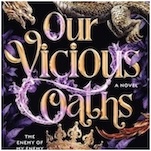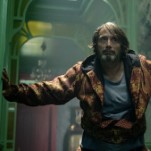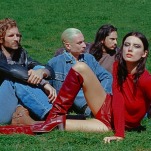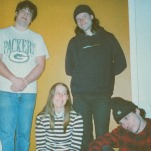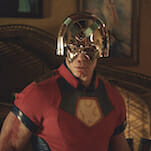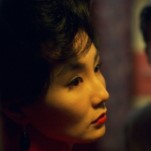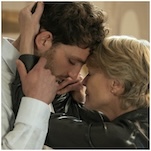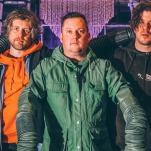Grant Morrison Merges String Theory with Superheroes in DC’s Multiversity
The concept of parallel universes may sound like dorm room stoner talk, or a Time-Life Mysteries of the Unknown book, but casual comic book fans have recognized it as a bedrock of the DC Universe for decades. Hatched in the 1960s as an easy way to explain why the Flash and Green Lantern of the sci-fi Silver Age were radically different from their original Golden Age predecessors, parallel universes have been a regular theme running throughout writer Grant Morrison’s work with the company, stretching back to his first ongoing DC writing assignment — 1988’s Animal Man. Morrison’s newest miniseries, Multiversity, is his first serious attempt to catalogue the shape of DC’s sprawling realities at length, exploring several different worlds within the DC multiverse over the course of its eight oversized issues.

“It’s a really primal kind of thing, you know,” Morrison says about the enduring power of the concept. “When I was a kid I loved the Flash costume, but then I saw Professor Zoom who has a yellow Flash costume, and there’s just something about that when you’re a kid and you’re using pens to color things in. I think it’s just a primal thing, seeing the variants of characters — seeing the versions of things. What would Superman be like if he were a vampire, or Batman be like if he were a werewolf. We’re so familiar with these archetypes and these characters that just giving them a little twist seems to be one of the basic thrills of comic books. The whole idea of the ‘road not taken’. We’ve often thought of alternative versions of our own lives, so I think people like to read about these characters having alternative lives and taking different paths and making different choices.”

Multiversity was announced in 2009, originally scheduled to debut before DC’s continuity-wiping reboot in 2011. As Morrison worked on the scripts, though, the project expanded beyond a travelogue of the 52 different universes that currently exist within DC’s superhero line. Even if he knew he couldn’t include every universe at length in the series, he had to know what set each one apart and how they related to one another. The Scottish scribe created a map of the multiverse, which was released to convention visitors at last month’s San Diego Comic-Con. Morrison also wrote a detailed concordance that keeps track of the signifying nature and major characters of each universe. Excerpts will be published in each issue of Multiversity, providing DC readers with reference material for these new pocket cosmos.

“Initially it was just going to be a bunch of comics, each set in a different parallel universe. All came with different types of storytelling, just like as a kind of exercise,” Morrison says. “But then I decided I had to tie them together somehow. I wanted the series to work as a whole, as well as parts. Once I started working on the bookends, it determined how big of a story [it’d be], and that’s when I needed maps and I needed the concordance. I needed to know where everybody lived and where everyone came from. I was creating the framing device when this thing got really big for me.”
Morrison wasn’t building these universes simply for the story told in Multiversity, though. Ideally, these ideas will inspire DC stories for years to come. “We tried to make all of them interesting,” he says, noting that “the steampunk cowboy world or the Nazi world of Earth-10 have really great potential for a long-running series. Everything that we did, we tried to make sure that it would all work, but those two I’d certianly like to see somebody try. And even the pulp stuff or the universe with the bored children of superheroes would make a great series as well.”
-

-

-

-

-

-

-

-

-

-

-

-

-

-

-

-

-

-

-

-

-

-

-

-

-

-

-

-

-

-

-

-

-

-

-

-

-

-

-

-

































